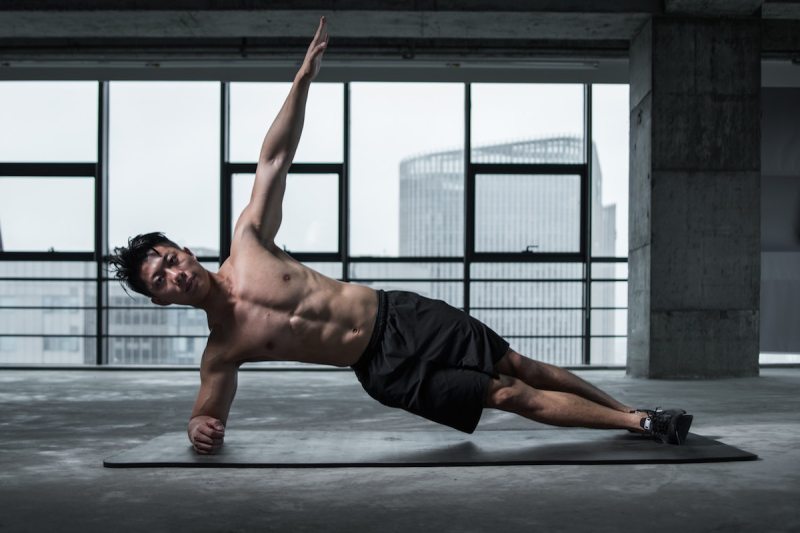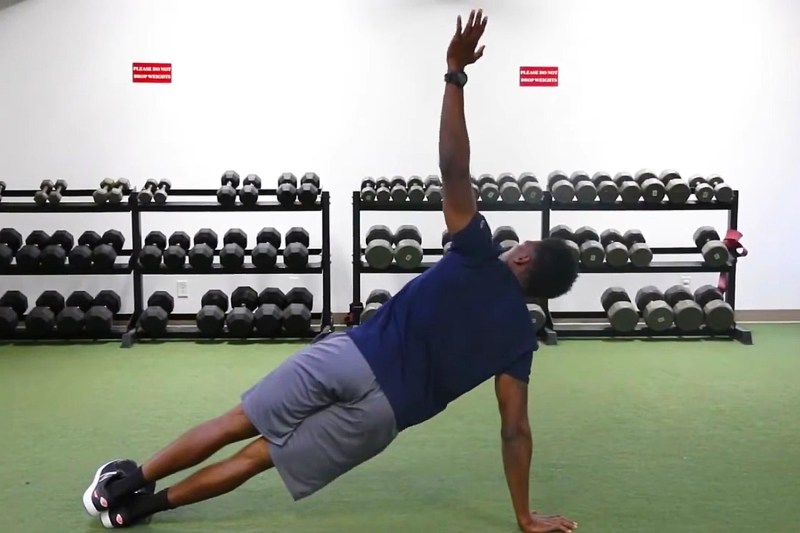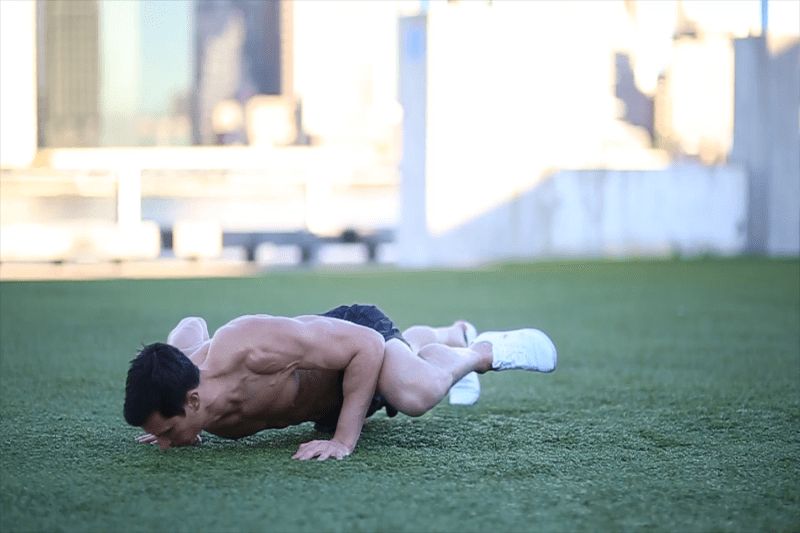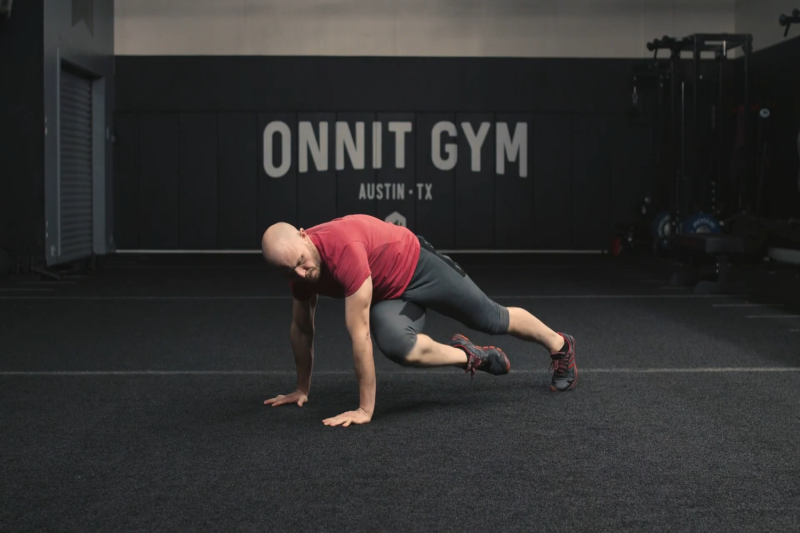
Nearly everyone wants a six-pack, and many people stick to only working the rectus abdominis — the abdominal muscle that runs up the center of your torso. While we want this muscle to be strong, all the core muscles as a group need attention, which means adding some of the best oblique exercises to your ab workout routine!
Having a functionally strong core that effectively provides your body with the support and balance you need to perform both athletic and daily life activities optimally requires all the muscles that comprise your core to be equally strong. Focusing solely on just one or two muscle groups will create imbalances that cannot only detract from your movement efficiency and power but also increase your risk of injury.
One of the unsung heroes but key players in the orchestra of ab muscles are the obliques. The obliques are the muscles on the sides of your torso that enable side-to-side bending, torso rotation, and spinal flexion. There are actually two layers (the internal and external obliques), and both layers also play a pivotal role in stabilizing and protecting your spine by resisting excessive rotation of the spine.
Since these are clearly all important functions for everyday life and athletic performance, incorporating exercises that target your obliques into your workouts is critical. Moreover, because the obliques participate in several distinct functions, an effective training program should take a well-rounded approach to strengthen them by including multiple exercises that hit all the different functions and demands of the obliques.
Ahead, we share our best oblique exercises to strengthen and tone your “side abs.” Try incorporating a handful of the moves into your workouts each week, switching up the ones you perform each workout.

How often should you train your obliques?
Some people say they like to work their abdominals every day, while others haven’t done a single crunch in years. While it is true that consistent full-body strength training takes care of keeping your core strong, implementing the most effective oblique exercises every week will help you experience even more strength in your abdomen, in addition to better posture, increased stability, and more definition.
A great goal is to train your obliques two to three times per week. No matter what other muscle groups you are targeting that day, consider adding two to three of the most effective oblique exercises at the end of your workout. Consistent training will bring along the best results.

Single-arm farmer’s carry
Oftentimes, the most functional core exercises are those that are unilateral and anti-rotational, which means they are performed on one side of the body and require your core to stabilize and resist the tendency to twist or bend. Such moves closely mimic a lot of the real-life demands on your core, and the single-arm farmer’s carry does a decent job of checking both of these boxes. The key is to select the heaviest weight you can handle with good form.
To perform the move:
- Stand upright with good posture while holding a heavy dumbbell, kettlebell, or weighted implement in one hand. Your arms should be down at your sides.
- Keeping your core tight, your chest up, and your shoulders even, walk forward for about 15 paces or 30 meters.
- Turn around and walk back.
- Switch arms and repeat.
- Complete three laps per side.

Pallof press
This is another anti-rotational exercise, and it will get your obliques, shoulders, and abs working. Remember to keep your core tight and engage your glutes for stability. You can fine-tune the intensity of the move by the width and thickness of the resistance band you choose — for an easier level, choose a thinner band, and for a more advanced modification, choose a wider and thicker band.
To perform the exercise:
- Attach a resistance band with a handle to a pole or stationary object. You can perform the exercise kneeling or standing, but the band should be at chest height.
- Your starting position should be far enough away from the anchor point that there’s decent tension on the band.
- Hold the handle of the band in towards your chest.
- Bracing your core and squeezing your glutes, straighten your arms by pushing them out away from your chest against the tension of the band.
- Hold the extended position for a full breath, and then return your arms to your chest.
- Complete 15 reps.

Thoracic rotations
This exercise targets your obliques, but it’s also great for the whole core and your shoulders. It’s also a mobility exercise for your spine and helps build balance.
Here are the steps:
- Start in a pushup position with your core tight and glutes engaged.
- Shift your weight onto your right hand and lift your left hand off the ground, rotating your spine and pivoting your feet enough so that your whole torso is facing the left wall and your left arm is pointing toward the ceiling. Your body should be in a “T” position.
- Hold this position for a full breath and then return to the pushup position.
- Switch sides and complete 12 reps per side.

Single-arm overhead press and reverse lunge
Like the single-arm farmer’s carry, this is a unilateral, anti-rotational exercise. While targeting the obliques, you’ll also strengthen the rectus abdominis, glutes, deltoids, traps, and lats. Start with a lighter weight until you master the form and coordination, and then ramp up the resistance to the heaviest weight you can handle while maintaining proper form.
To perform the exercise:
- Stand upright with good posture, holding a dumbbell at shoulder height on your right side.
- Step your right leg backward and lower into a reverse lunge, bending both knees to 90 degrees.
- As you rise back up and step back to your starting position, press the dumbbell straight up into an overhead press. Be sure to keep your spine straight and your core tight.
- Complete ten to 12 reps on the right side before switching sides.

Stability ball alphabets
This is a great way to engage your whole core and really call upon those obliques for stability. Make sure to keep your hips up and glutes engaged so that your whole body is in a straight line.
To perform this move:
- Get in a forearm plank position with your forearms on a stability ball in front of you.
- Brace your core and keep your hips in line with your body.
- Trace the cursive alphabet by dragging the ball in small movements that replicate the letters. Alternatively, make 16 small circles and then switch directions.

Hip drops
This exercise is a modification of the traditional side plank that really targets and strengthens your obliques.
To complete this exercise:
- Lie on your right side with your legs stacked on top of each other.
- Push up so that you’re on your right forearm and your hips and torso are off the ground in a side plank position.
- Your body should form a straight line from your head to your heels.
- Drop your hip back down so that it brushes the floor, and then squeeze your obliques to lift it back up in line with your propped-up body.
- Complete 12 reps and then switch sides.

Spider-Man pushups
Compound movements like this exercise will get you ripped by engaging multiple muscle groups at once. This pushup variation intensifies the involvement of your obliques — and core in general — especially if you move as slowly as possible and concentrate on engaging your core. It’s an advanced move, so give yourself time to master it.
Here are the steps:
- Get in the pushup position with your hands slightly wider than shoulder-width apart.
- Instead of bending your elbows straight out to the side, angle your arms so that your elbows bend about halfway between out to the side and straight back (picture 4 and 8 on a clock).
- As you lower your chest to the ground, lift your right leg off the ground, bending the knee and drawing your leg forward so that the right knee comes up to the right elbow.
- Hover in the lowered position while holding your leg up by your elbow for a full breath.
- Press back up, returning your leg to the starting position.
- Alternate legs and complete 20 reps total.

Russian twist
The Russian Twist is a classic oblique exercise due to its effectiveness. You’ve likely seen it or tried it, but it’s definitely worth pulling out of the archives if it’s not one of your go-to strengthening moves these days. It’s a great core mobility exercise and will get your obliques burning (in that oh-so-good way).
Here are the steps:
- Grab a medicine ball or moderately heavy dumbbell.
- Sit on an exercise mat with your knees bent and feet flat on the floor.
- Engaging your abs, lean your torso back into a V-sit position, and lift your feet off the ground. You can keep your knees bent in the tuck position or straighten your legs and lift your feet up into the air into a full V-sit for a more difficult progression.
- Twist your upper body towards one side, bringing the weight to hover just over the floor on that side of your hips.
- Keep rotating your torso back and forth to switch sides.
- Complete 12 reps per side.

Crossover mountain climbers
You’ll get your heart pumping, your legs burning, and your core quivering with this bodyweight move. This move modifies standard mountain climbers to increase the workload on the obliques. Be sure to maintain proper form with your hips in line with your body.
To perform this exercise:
- Get into a pushup position with your core and glutes engaged.
- Pressing your weight into your hands, alternate bending each knee and bringing the leg up under your chest. Cross your body so that you aim to tap your right knee to your left elbow and your left knee toward your right elbow.
- Move as fast and hard as you can for 30-60 seconds.

Medicine ball chops
This exercise is excellent for strengthening the obliques, shoulders, and upper back. You can also hold each end of a high-quality dumbbell if you don’t have a medicine ball. Keep your core braced and engaged the whole time.
Here are the steps:
- Stand upright with good posture.
- Straighten your arms so that the medicine ball is straight out in front of your body at chest height.
- Keeping your arms straight, glutes squeezed, and core tight, drop the ball to the lower left and then straight up to the upper right, as if vigorously chopping a straight line across your body.
- Complete 12 chops, and then switch from the lower right to the upper left.



